Do you know why gold can have different colors? It can be white, yellow, pink, but also blue or purple. Learn about the colors of gold, even those that cause allergies ♦
It’s easy to say gold. The metal most used in luxury jewelry, considered the most precious asset for centuries, kept in ingots in bank vaults, actually has many faces. Because since it was used to make rings and necklaces, bracelets and earrings, gold has undergone several transformations. First of all, it can be more or less pure.
When a piece of jewelry is 100% gold it has 24 karats, while if it is 75% it is 18 karat. The remaining 25% is made up of other metals.
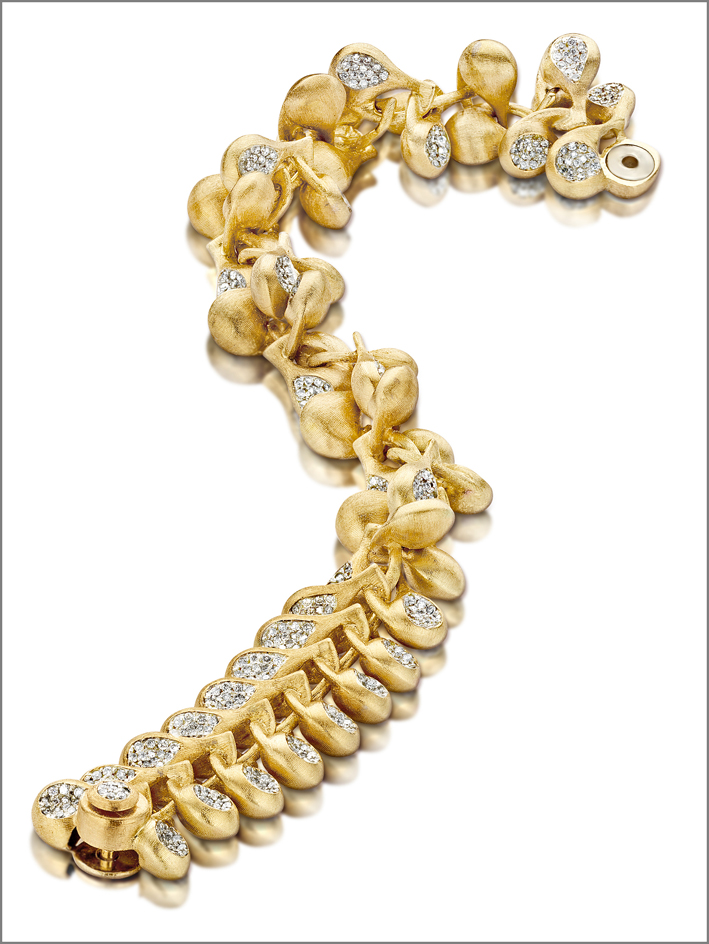
A percentage of 58% indicates a 14-karat alloy and, finally, when only 38% of gold remains, you have 9 karats. Furthermore, when it is alloyed with other metals, gold can change color, depending on the type of metal that is added. Everyone knows the three main shades: yellow, white and pink gold, colors that can be more or less intense. In reality, many jewelers use different percentages, which also give the gold completely different shades. In the diagram on this page we have summarized the main combinations that arise from the union of gold with other metals, in particular silver and copper.
In nature, in fact, gold has an intense yellow color, tending to orange, and is a very soft metal, which is easily deformed (1 gram can be transformed into a sheet of 1 square meter).
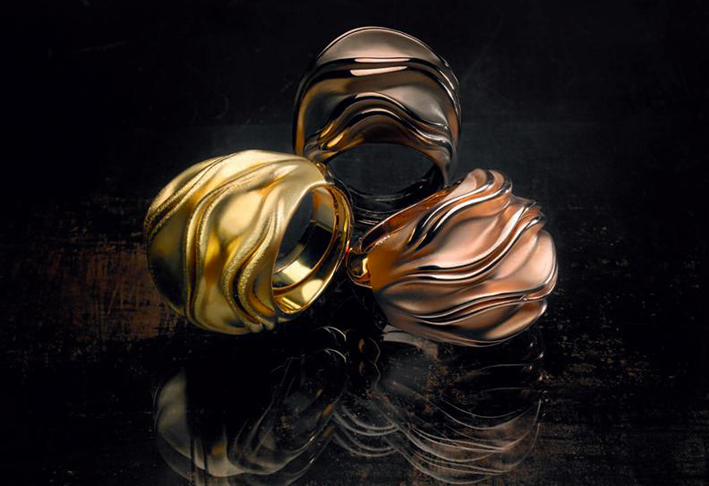
1 Yellow gold
The more intense yellow, the purer it is, as found in nature. The 99% pure gold is 24 carat and is exclusively deep yellow. Yellow gold is also the most used in jewelry. There are countries, such as India, which prefer gold in this color which is its natural hue. Yellow gold can also be of a less intense color, especially when alloyed with silver. Obviously the yellow gold with fewer carats, that is in alloy with other metals, has a more easily less intense color.
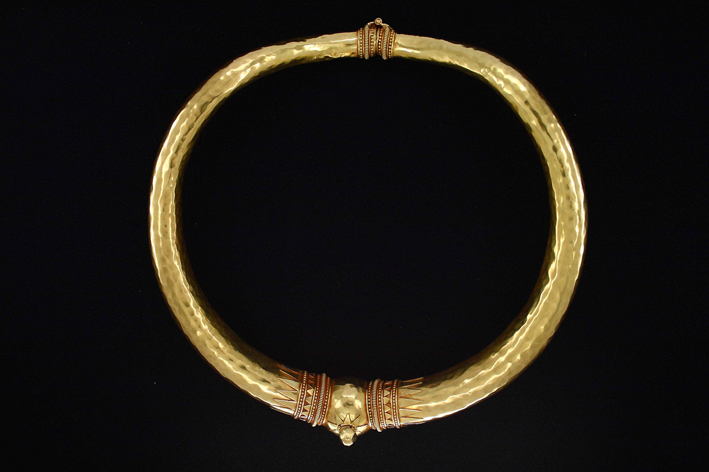
2 White Gold
It is an alloy with a white metal. When it comes to old jewels, it is often nickel (which however can cause allergies, on average to one in eight people), or manganese, palladium, but also silver. The alloy of gold and nickel is highly valued in jewelry because it makes the metal more durable for rings and brooches. On the other hand, gold with palladium is softer and makes setting stones easier. White gold is often not perfectly white, but has shades of yellow, brown or pink.

3 and 4 Pink gold and red
It is an alloy that uses copper. It was very popular in Russia in the nineteenth century and has come back into vogue in recent years. The color difference between red and pink shades depends on the copper content. For example, a 18-carat gold red uses 75% gold and 25% copper. A 18K rose gold 75% gold, 20% copper and 5% silver. Some even add up to 15% zinc to give a dark yellow hue.
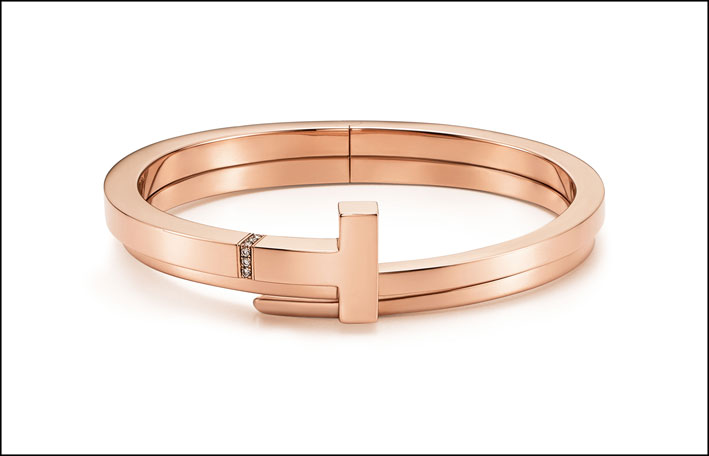
5 Green gold
Green gold was already known in ancient times: this shade is obtained by adding silver. The color of the metal with this alloy is greenish-yellow, sometimes also obtained with cadmium, a metal which, however, can cause allergies. The light green hue is obtained with an alloy of 75% gold, 23% copper, 2% cadmium. The more intense green color has instead 75% gold, 15% silver, 6% copper and 4% cadmium.
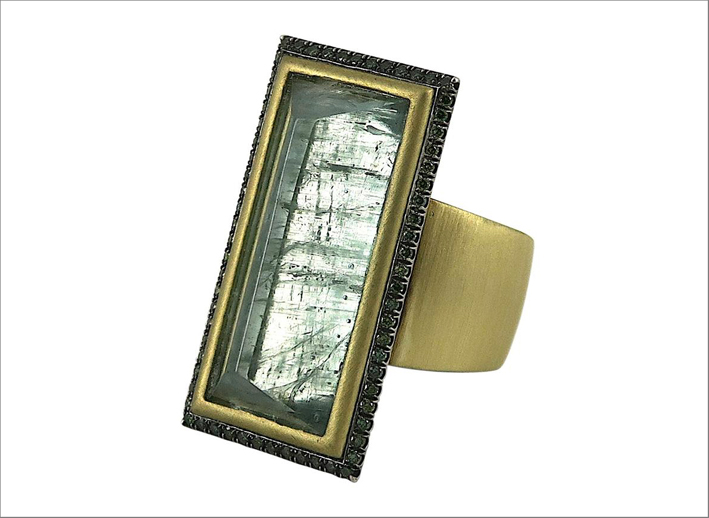
6 Gray Gold
The gray color is especially used for jewelry with a modern design. This color is obtained with a mix of yellow gold and palladium or silver, manganese and copper. If the other metals are added in minimal quantities, the color is closest to that of white gold.
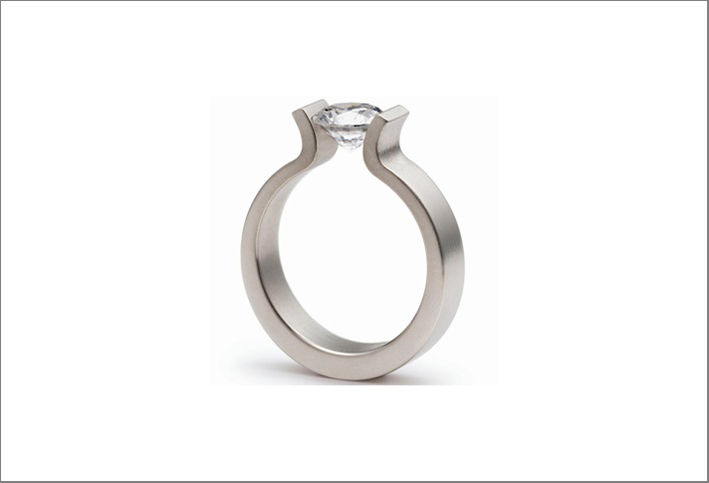
7 Purple Gold
Violet or purple gold is obtained from an alloy that includes a particular type of aluminum. But purple gold is more fragile than other gold alloys and for this reason it is not often used: a sharp blow could cause the metal and, therefore, the jewel to shatter. Often purple gold is used only for small details of the jewels, together with gold (more robust) with other colors.
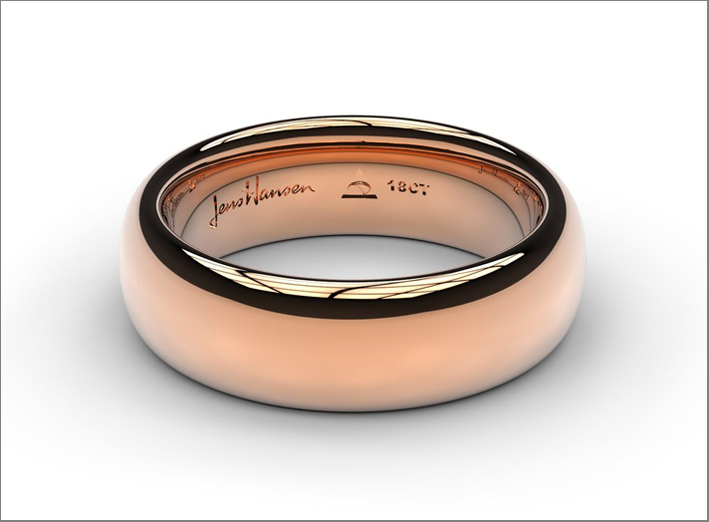
8 Blue gold
It is used rather rarely, but it is undoubtedly surprising. The gold of this color is obtained with an alloy with two metals little used in jewelry: alongside the yellow metal (46%), in fact, gallium or indium are added. in case, before buying it make sure you do not have allergies to these metals.
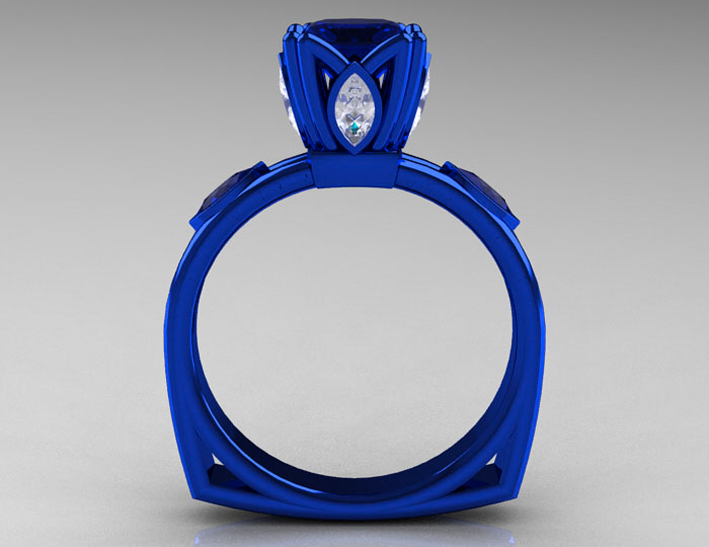
9 Black gold
It can be produced with various methods: by electroplating, with a rhodium or ruthenium patina. Or with a coating that uses sulfur and oxygen or with a forced oxidation by chromium or cobalt. More recently, black gold has been created by creating nanostructures on the surface and laser treatment. It is a high-impact color, often used by jewelers over the past decade.
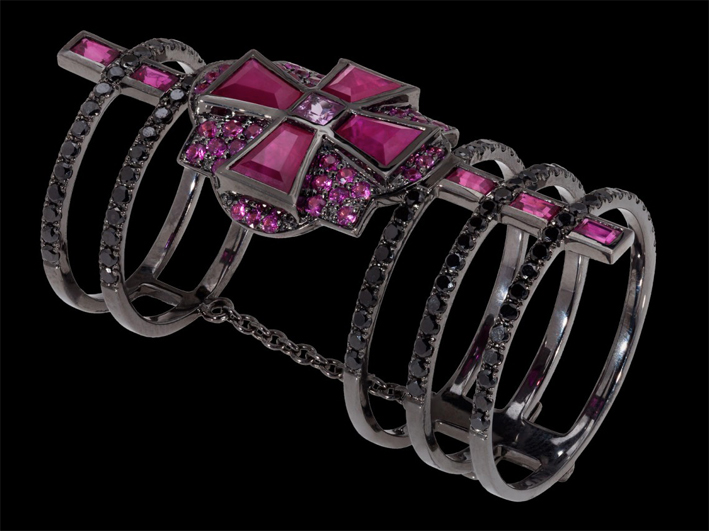
In this graphic scheme taken from Wikipedia you can see the mix of metals that add a hue of color to gold. They range from the very deep pink, which has more copper (boulder corner on the right) to the white one, usually obtained by adding silver. The top tip of the triangle instead tends to yellow.
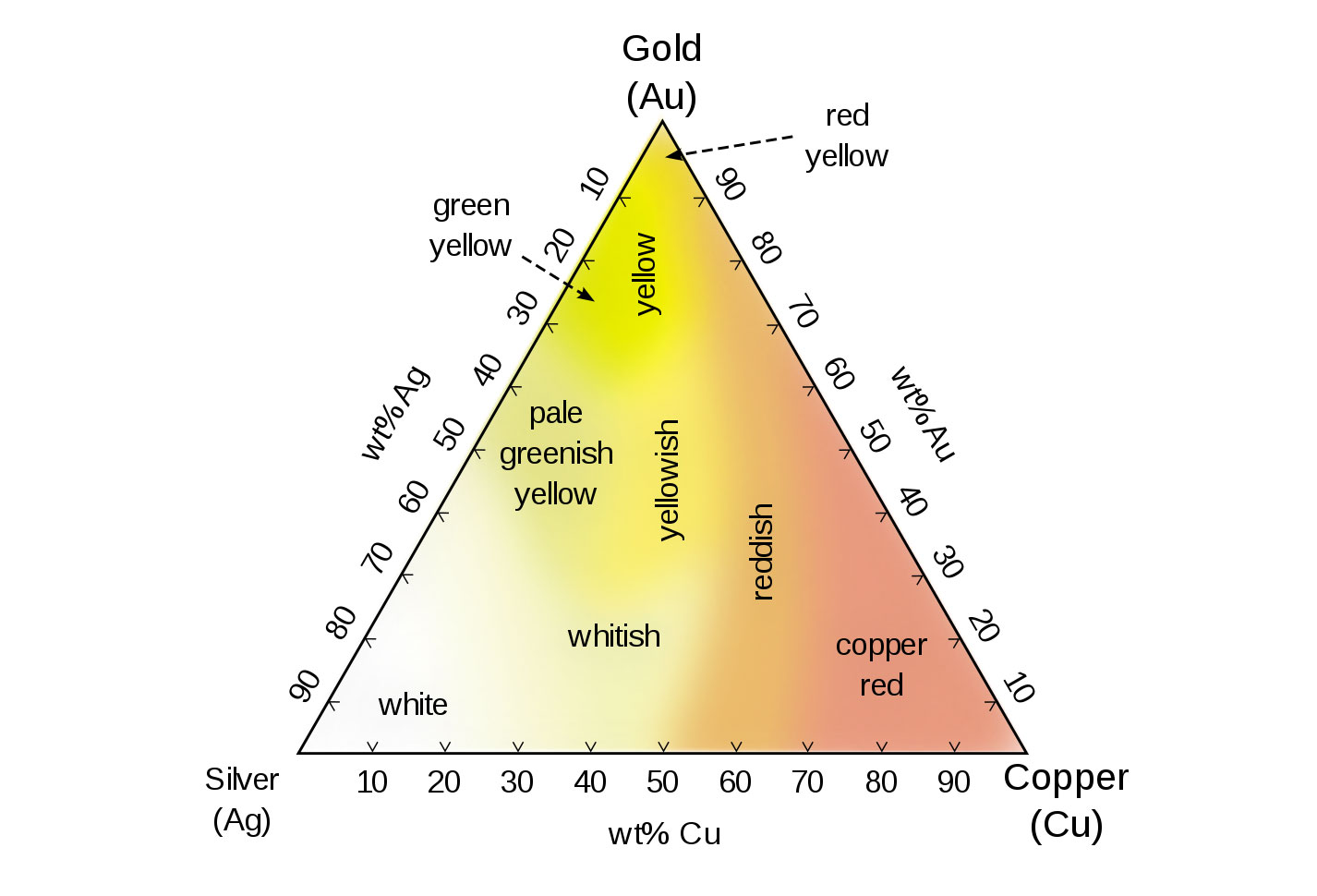
[/caption]

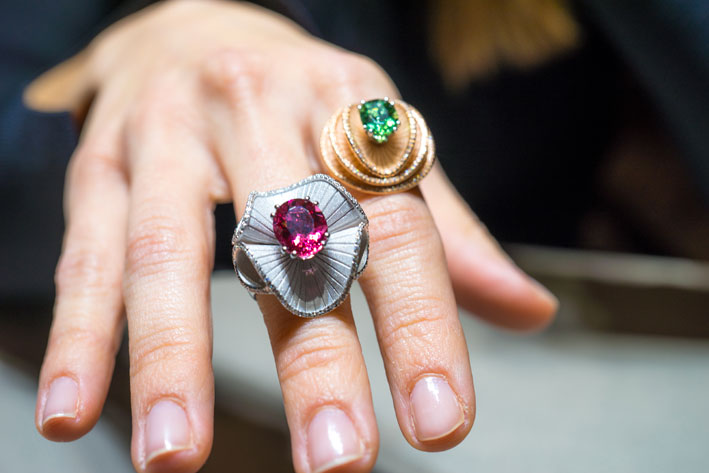






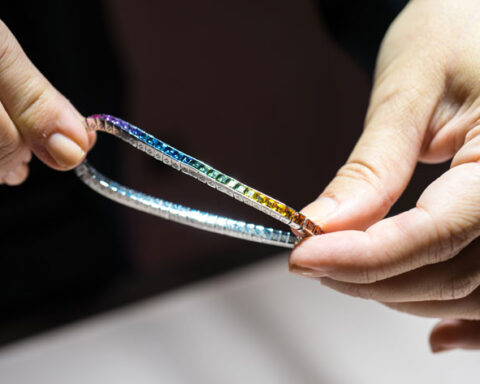
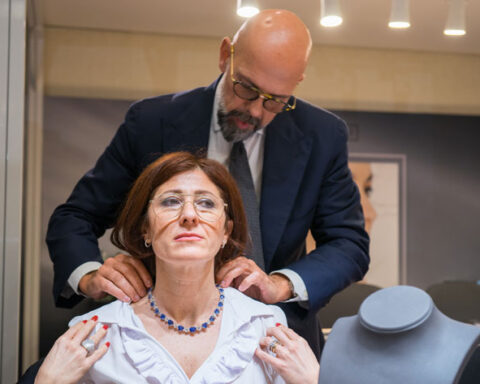

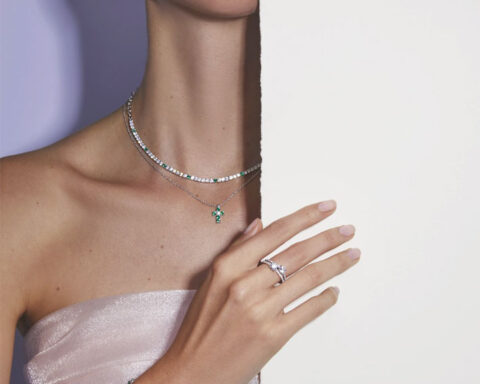
Ad ogni colore dell’oro viene attribuito un significato da mettere in relazione con il carattere della persona che lo indossa.
Salve , mi saprebbe dire perfavore qual’è il colore dell’oro per una persona dal carattere intelligente e preciso come indica lo stesso segno zodiacale della vergine ( ascendente cancro ) ?
Grazie .
Caro Pianetamercurio, la precisione si addice con al colore bianco. Ma, naturalmente, più importante di tutto è il gusto di chi deve indossare il gioiello…
Muy interesante, savia yo que se podia mezclar el oro con la plata y el cobre, pero no sabia de estas otras aleaciones!!!.
Manejan ustedes el aceite de vitriolo?
Gracias Santiago, aceite de vitriolo? En realidad no…
Muy buena explicación, gracias
Hola tengo un material q encontré bajo tiera y qiero saber q podía ser
Hola Graciela, lamentablemente no podemos ayudarte. Debe consultar a un gemólogo en la ciudad donde vive, o la más cercana a usted.